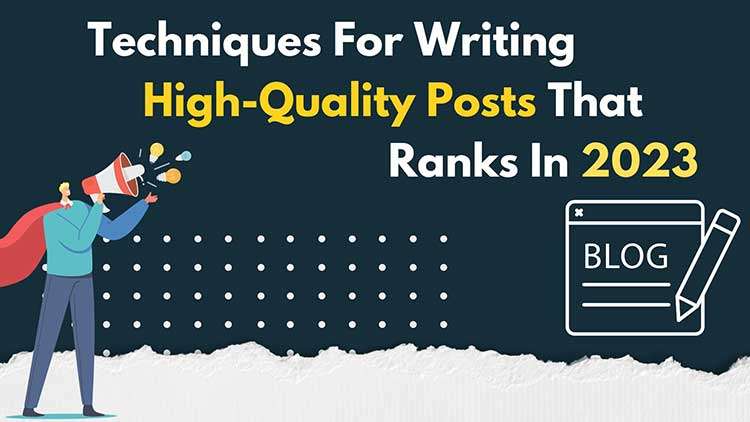Are you looking for tips and tricks to craft high-quality content quickly? If so, then this is the post for you. In it, we discuss strategies and tools available in 2023 to create successful blog posts that both engage readers and rank highly in search engine results pages. We explore different techniques – from identifying your target audience to optimizing your post for SEO – which will help you write exceptional posts in an efficient manner. So if you’re ready for blogging success come 2023, keep reading!
II. Identifying Your Target Audience
Identifying your target audience is essential for creating effective and engaging content. You can utilize various data collection platforms like Google Analytics, surveys and customer feedback to get more information about the demographics, interests and behavioral patterns of your target audience. Buyer personas are fictional representations of your ideal customers, created using this data on your audience. Understanding the needs, pain points, goals and preferences of your target audience will help you to create content that resonates with them. To make sure you’re speaking to their needs in the right manner, it’s important to use an appropriate tone and language, as well as the right format (e.g., shorter pieces if busy professionals are the primary audience). By tailoring your content specifically to meet their expectations, you increase the chances of achieving desired results from it.
III. Researching and Organizing Your Ideas
Researching and organizing your ideas for a blog post is an essential part of creating high-quality content quickly. To research relevant topics, use keyword research tools to identify the most searched-for topics in your niche, keep up with industry trends and news, analyze competitor’s content, and utilize social media listening tools. Additionally, it can be helpful to ask your audience directly for feedback on what they would like to see covered. For organizing your ideas and outlining your post, consider utilizing mind mapping or building out a bullet-point outline, as well as storing any notes or ideas that you find useful in organization tools like Trello, Evernote, or Asana. There are also various resources available for researching and brainstorming such as Google Scholar and JSTOR for scholarly articles, Quora and Reddit for insights from experts and industry veterans, Buzzsumo and Ahrefs for understanding what content is resonating with your target audience, online thesauruses and grammar checkers to improve your writing process; additionally Xmind can be used for mindmapping new ideas.
IV. Writing and Editing Your Blog Post
Putting together your blog post doesn’t have to be a time-consuming process. To speed up the writing process, set yourself a goal for each session, establish a routine and stick to it, stay focused and knock out that first draft. When structuring your post, break down long paragraphs into shorter ones and use headings, lists, images and videos to make it more engaging—all while keeping a consistent font and style. Once you’ve written your post, take the time to edit it for grammar and punctuation errors, as well as read over it to ensure clarity for your readers. Asking someone else to proofread can also be helpful in catching mistakes you may have missed. Lastly, after taking some time away from the content consider returning with fresh eyes as sometimes this is when you spot what needs tweaking!
V. Optimizing Your Blog Post for Search Engines
Optimizing your blog post for search engines is an essential part of ensuring it reaches its target audience. The best way to optimize a blog post is by using keywords effectively, while avoiding keyword stuffing. This involves researching the right keywords to target and incorporating them in a natural and strategic way throughout the post. Additionally, improving your readability and user experience, including links to other relevant content, creating meta descriptions that match the content of your post, optimizing images and videos with descriptive file names and alt tags, and creating a sitemap are all important considerations for improving SEO performance. Tools such as Google Analytics and Search Console can help track your rankings and identify opportunities for improvement, while resources like Google Trends can be used to identify popular keywords or topics in your niche. All of these elements will give you insight on how well your blog is performing so that you can make adjustments to optimize it for better search engine performance.
VI. Conclusion
In conclusion, creating high-quality content for your blog is an attainable goal with the proper research, preparation and dedication. Whether your audience is looking for entertainment, education or inspiration, the above mentioned strategies can help you craft effective blog posts that will resonate with them. As always, be sure to take feedback into consideration so that you can adjust and evolve your strategies accordingly. With consistency and patience, you can set yourself up for blogging success.



